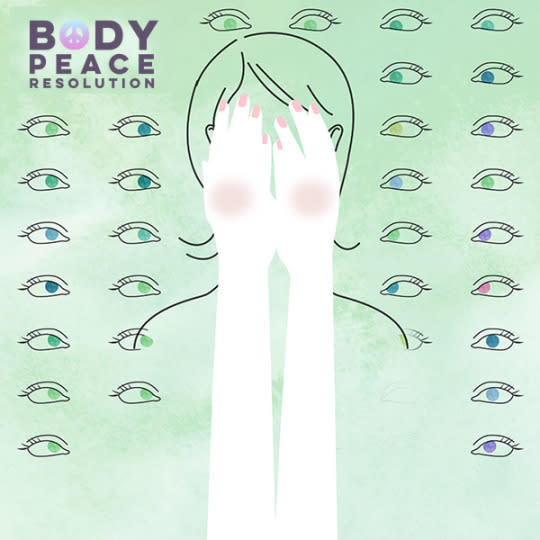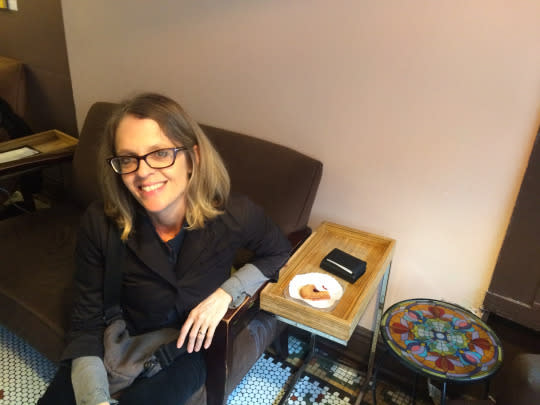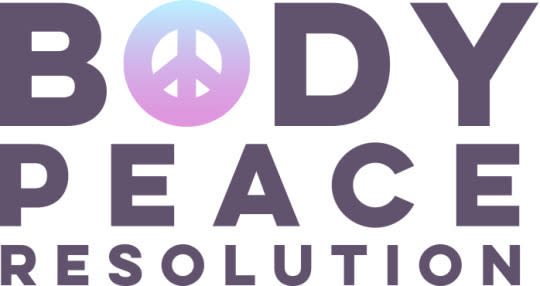How My Vitiligo Diagnosis Made Me Adopt a ‘Mirrors Are Stupid’ Philosophy

A diagnosis with the skin condition vitiligo forced me to re-think my basic beliefs about body image — and the messages about self-esteem and self-image I was passing on to my daughter. (Photo: Corbis Images)
Few people have seen my mother without makeup. Foundation, liquid eye liner, the works. She always applied lipstick throughout the day, even on airplanes. She wore it to clean the house. She wore it to the pool. I grew so accustomed to her flawless face, that as a child I was proud to tell my friends that my mother had no wrinkles.
Now, decades later, I have my own daughter. Cliche or not, I want things to be different for her. I have always kept primping to a minimum and made sure she saw me leaving home with a fresh face as often as with a made-up one. We have one mirror in the bathroom as well as an antique one that belonged to my grandmother, which, ironically, produces a warped reflection. Beyond a dialogue about the burden many women feel to look pretty, I felt it as important that my daughter not witness Mommy obsessing over her reflection.
Those principles were challenged when I noticed something happening to my face in early 2012. I saw the change in the car on a sunny day — and even then, I had to blink. Sitting in the passenger seat, my nose inches from the vanity mirror, tiny, white patches appeared beside my mouth. So slight, I wondered if toothpaste had bleached my skin.
I didn’t think anything of it for the next six months until, inexplicably, one patch grew overnight to the size of a nickel. “I’m sure it’s nothing,” I told my doctor, who squeezed me in that day. I heard the word for the first time then: vitiligo. By way of explanation, my doctor said, “You know, Michael Jackson.” My heart raced and I whispered, “Oh, sh**.”
Vitiligo is an autoimmune condition, which means that the body’s immune system mistakenly attacks healthy pigment cells, or melanocytes, draining color from the skin. Approximately 1 percent of the entire population is affected by vitiligo, half of whom are diagnosed by the time they’re 20 years old, 95 percent by age 40. Though most commonly noticed in people of color, the condition does not discriminate.
Vitiligo can be linked to other autoimmune diseases, so the first order of business was to test my thyroid to make sure hormone levels were normal. Results came back negative. Since I am Caucasian, no one noticed the patches on my face, so this disruption to my otherwise normal life soon ended — until, months later, a quarter-sized spot appeared on my hand. Overnight, a second spot cropped up on my other hand.
At this time, I found myself on the precipice. Vitiligo had invaded my body — and I found myself obsessing about my appearance in a way I had made a point not to before my diagnosis. On the subway, at Coney Island, at the park, my spotted peers stood out like neon. For the first time in five years, I noticed vitiligo on the hands of my husband’s college friend. All of these moments induced sheer panic and “oh, sh**” constantly ran through my mind. Up until that point, my vitiligo had gone unnoticed. But what if mine spread like theirs had?

My hand, with some of the hallmark signs of vitiligo. (Photo courtesy of Mariko Zapf)
Researchers believe genetics play a role in the onset of vitiligo, as do physical and emotional stressors and exposure to environmental toxins. I have them all. My mother has rheumatoid arthritis, another autoimmune disease. I have used hair dye with phenol-laden, a chemical that may trigger vitiligo, for 15 years. Among life’s cr***ier events, my father died of cancer, which obviously was a stressful event for me. It is difficult to estimate how many hours I have spent pondering why me? On the conservative side, many.
While vitiligo’s origins are nebulous, a treatment protocol exists. It includes phototherapy (exposure to narrowband UVB light for several minutes, two to three times per week), topical applications (steroids and “immunomodulators,” which suppress the immune system) and, less commonly, skin grafts. Nada Elbuluk, MD, an assistant professor of dermatology at the New York University Langone School of Medicine, said up to 70 percent of her patients respond to these treatments within three months, meaning affected areas show some signs of re-pigmenting. Regaining color fully or even mostly, however, is rare — precisely why so many of us suffer.
Beyond the conventional regime, alternative treatments purport to reduce vitiligo symptoms. I confess: I abandoned a steroid cream yielding no results and pursued some of these options. Within two years, I purchased supplements, amino acids, vitamins, Chinese herbs, omega-3s, and probiotics. I spent hours watching “how I cured my vitiligo” videos online and learning about inflammation, gluten, leaky gut, stress, sleep — you name it. At times, I was sure each had contributed to my worsening skin.
Elbuluk is well-versed on these alternatives. She opposes patients dabbling in them without support from their doctors. “There are significant risks associated with taking even the most benign of supplements that may, for instance, thin the blood or pose a health danger when mixed with other medications,” she explains.
It became clear that what I had been doing by cramming my medicine cabinet was akin to throwing spaghetti at the wall. Nothing stuck.
By late spring 2015, the spots had spread to my neck, shoulders, an elbow, a knee, feet, ankles, and much of my hands. It was time to cast a wider net. I stumbled on a case report concluding that an immune-suppressing rheumatoid-arthritis drug has shown potential in treating vitiligo. The author of the report, Brett King, MD, PhD, at Yale University School of Medicine, described vitiligo to me as a “cascade of signaling events in the skin that end with color loss,” and says that the medicine, tofacitinib citrate, “blocks that very first signal and without that … the other signals are not perpetuated.”

By spring 2015, the spots had spread to my neck, shoulders, an elbow, a knee, feet, ankles, and much of my hands. (Photo courtesy of Mariko Zapf)
While King’s case report is based on one patient, his findings have helped advance the understanding of vitiligo. His results were especially compelling because the patient re-pigmented on her hands — a difficult area of the body on which to regain color, not to mention an area of my body I cannot avoid seeing. He estimates that it will take five years for a vitiligo-specific JAK medication to become commercially available and covered by insurance. If I prove to be among the 30 percent of patients who do not benefit from current treatment options, knowledge of a stronger option has done wonders for my anxiety.
Related: What I See in This Photo Now That I Didn’t See Before
Meanwhile, a family wedding was coming up in the summer of 2015. To ensure I projected an even skin tone, I spent 53 minutes chatting online with a makeup concealer specialist. $97 later, my once-light makeup bag gained some heft. During the wedding, my mood fluctuated between embracing the beauty of the event and feeling distracted, even eager for it to end. And all this while trying to hide my dismay, especially from my daughter.
Elbuluk and King each told me they are “excited” about the growing awareness of vitiligo — and as difficult as it can be to grapple with an illness that alters my appearance, I am too. Without education, compassion, and funding, medical advances are futile. Day-to-day, it will be a relief to know people may understand what is going on with vitiligo sufferers like me.
My brother lives overseas, which means I don’t get to see him very often. Peter was able to join our family this past December for the holidays and I took the opportunity to push up my sleeves and show him what was going on with me. He isn’t a particularly emotional person, so I mostly stuck to the facts. I got through the timelines and terminology and realized in that moment that I was just fine. I didn’t search his face for pity. I didn’t feel anxious. Most importantly, when the conversation shifted to a new topic, my mind moved with it. I didn’t indulge in even a moment of worry over what I might look like one day in the future. In hindsight, I realized I was one step closer to accepting what makes my body different.

The writer, Mariko Zapf. (Photo courtesy of Mariko Zapf)
The journey continues. For now, “fresh face” for me will include concealer. I will forgive myself for looking in the mirror a bit more often. I will continue to burst into song about mirrors being stupid when the concealer has faded. Showing my daughter that I love and accept myself, vitiligo and all, has been a powerful experience for both of us, even if she isn’t aware of that yet. Along the way, I will also let myself off the hook if some days I feel more self conscious than others. And by my 50th birthday, I look forward to the white spots being a thing of my past.
Body-Peace Resolution is Yahoo Health’s January initiative to motivate you to pursue wellness goals that are not vanity-driven, but that strive for more meaningful outcomes. We’re talking strength, mental fitness, self-acceptance — true and total body peace. Our big hope: This month of resolutions will inspire a body-peace revolution. Want to join us? Start by sharing your own body-positive moments on social media using the hashtag #bodypeaceresolution

Read This Next: I Eat Slim-Shamers For Breakfast
